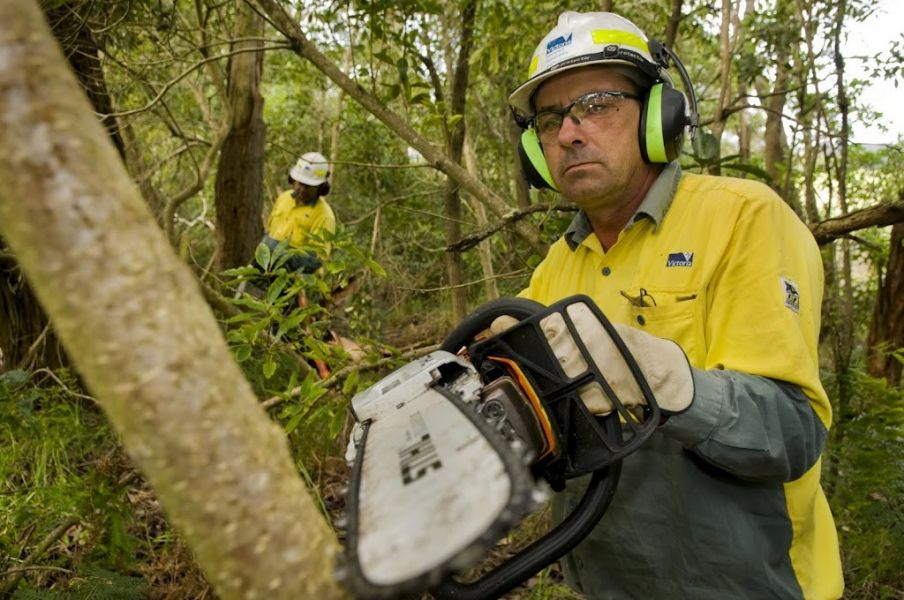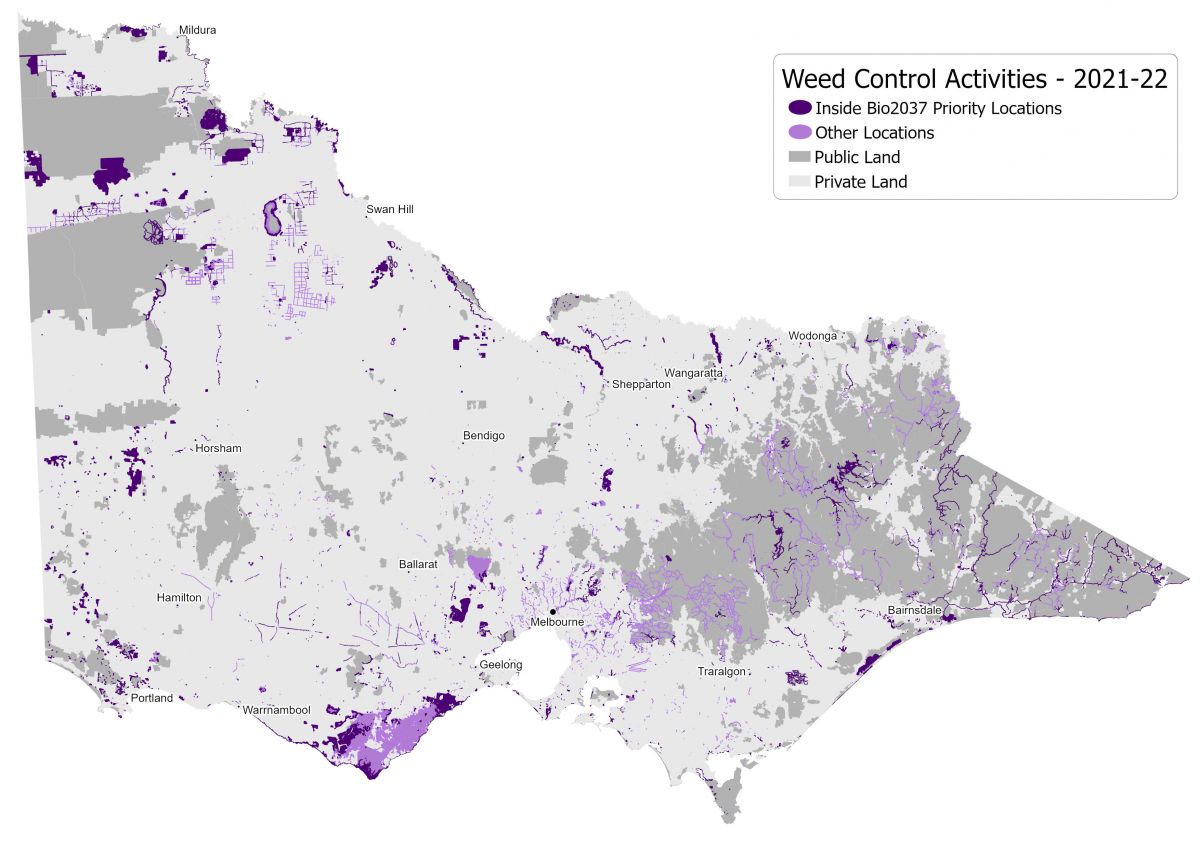Significant weed control achievements in 2021–22
- In 2021-22, we controlled weeds across over 600,000 hectares – more than 3 times the size of Port Phillip Bay. Over half of this was in Biodiversity 2037 priority locations.
- The area of weed control in priority locations in 2021-22 was over 5 times greater than in 2018-19.
- Our 'Eden' projects – Otway, Central Highland and Glenelg – focus on the detection and removal of high-risk weeds that threaten biodiversity values.

Woody weed removal in the Glenelg Eden project
Controlling weeds to protect native species in the Glenelg region
A long-running conservation project in south-west Victoria is helping native plants and animals to thrive by stopping the spread of weeds.
Funded by our Weeds and Pests on Public Land program, the Glenelg Eden project removes weeds across 90,000 hectares of public land to improve habitat and give vulnerable species such as the Blotched Sun-orchid and Long-nosed Potoroo the best chance to survive.
Operating since 2008, the project is led by DEECA Barwon South West and delivered with Parks Victoria and Gunditj Mirring Traditional Owners Aboriginal Corporation.
More than 87 unique weed species invading the region are targeted. Weed control has been done on over 195 infestations in national and state parks and forests, with the area recently expanded to include the Annya State Forest.
The project is continually improved to better assess and prioritise which infestations to target, so that investment is used efficiently to achieve the best outcomes.
Highly targeted action to remove common climbing-aloe has improved the herb-rich woodlands, healthy woodland and lowland forests of the Mt Clay State Forest, home to the critically endangered Small-flower Grevillea.
Controlling and eradicating weeds is one part of a broader strategy to restore the landscape. The Glenelg Ark fox control project complements Glenelg Eden by reducing the number of European red foxes that prey on native animals.
Comprehensive monitoring measuring the reduction of weeds and foxes shows that these two projects benefit many native plants and animals, including the endangered Southern Brown Bandicoot, vulnerable White-footed Dunnart and vulnerable Blotched Sun-orchid.
Weed control activities

Figure: 2021-22 activity data, weed control
Weed control
Annual target: 1.5 million hectares in Biodiversity 2037 priority locations
Table: Area (hectares) of weed control across Victoria for 2018-19 to 2021-22
| Annual progress | 2018-19 | 2019-20 | 2020-21 | 2021-22 |
|---|---|---|---|---|
| Priority locations (ha) | 69,726 | 201,857 | 400,583 | 352,387 |
| Other locations (ha) | 150,302 | 382,765 | 336,306 | 263,615 |
| Statewide total (ha) | 220,028 | 584,622 | 736,889 | 616,002 |
*These progress figures are a compilation of data from organisations across the environment sector. While the Victorian Government is a major contributor to this work, many of the projects from which this data is derived are undertaken by others.
The Victorian Government’s recent program announcements will continue to drive progress towards this target. These include the $10 million Nature Fund, continued support for community-driven action including Landcare and $32 million for 36 large-scale conservation projects announced in 2022 and 2023 under the Protecting Biodiversity Program.
Page last updated: 13/08/24